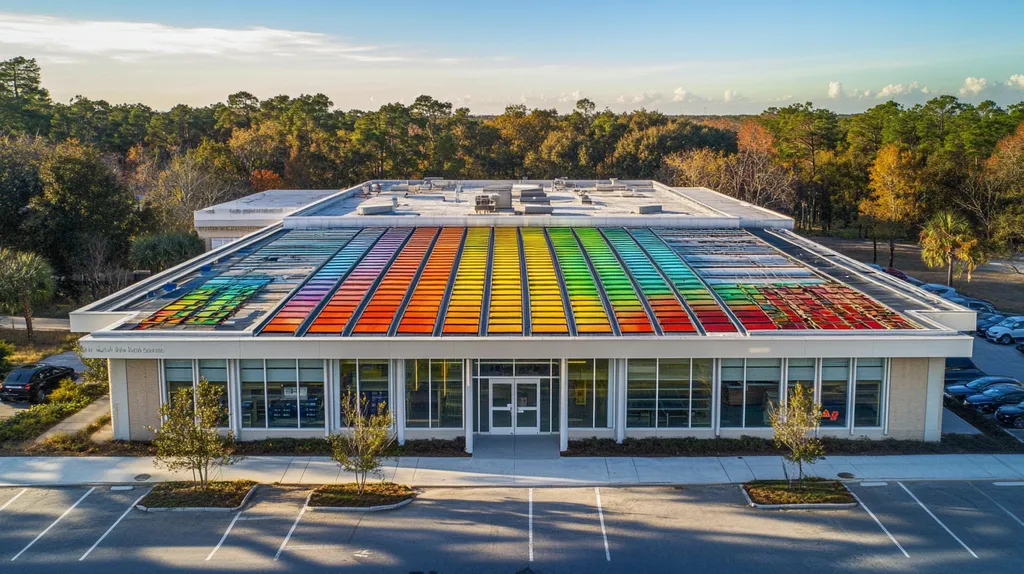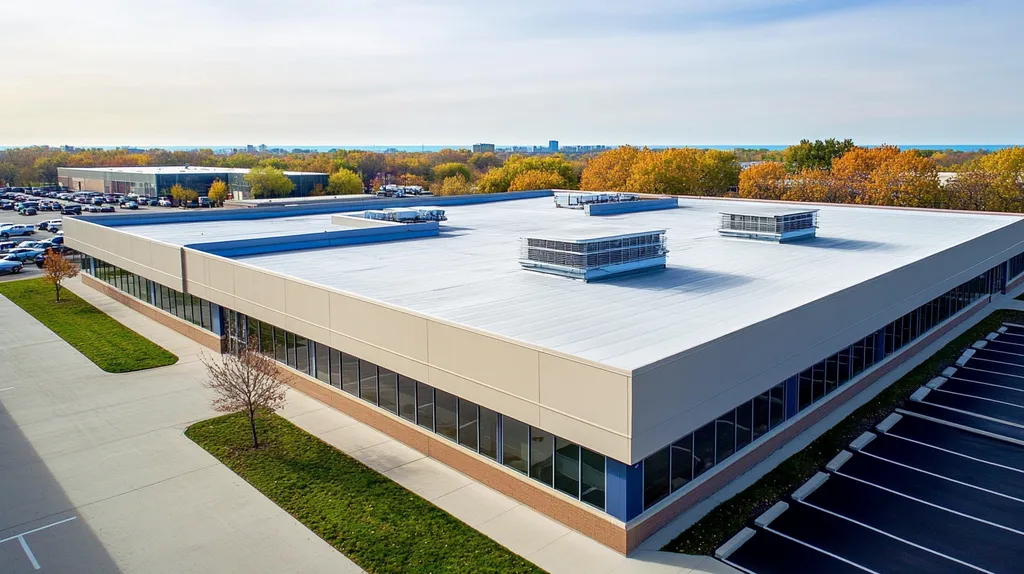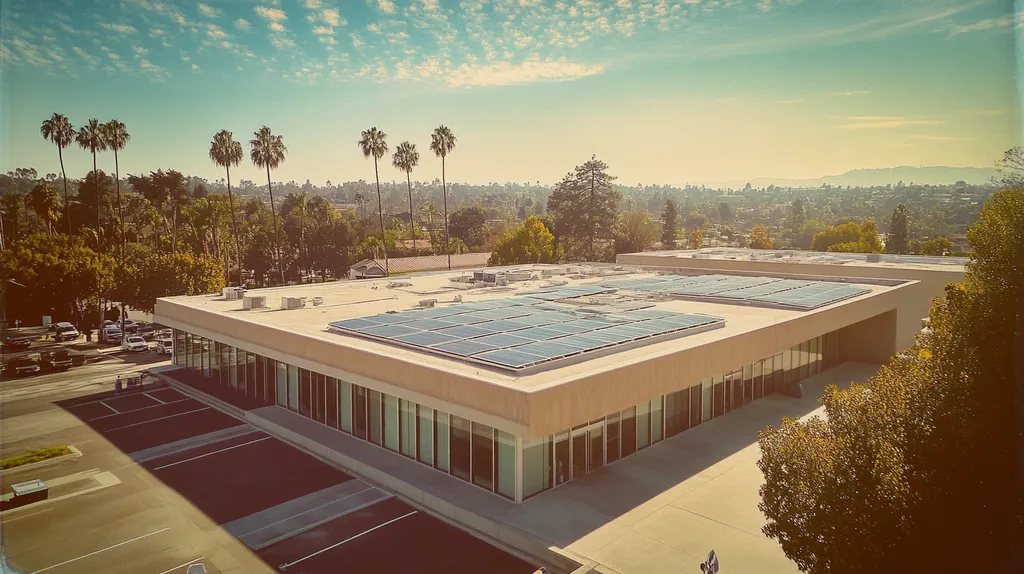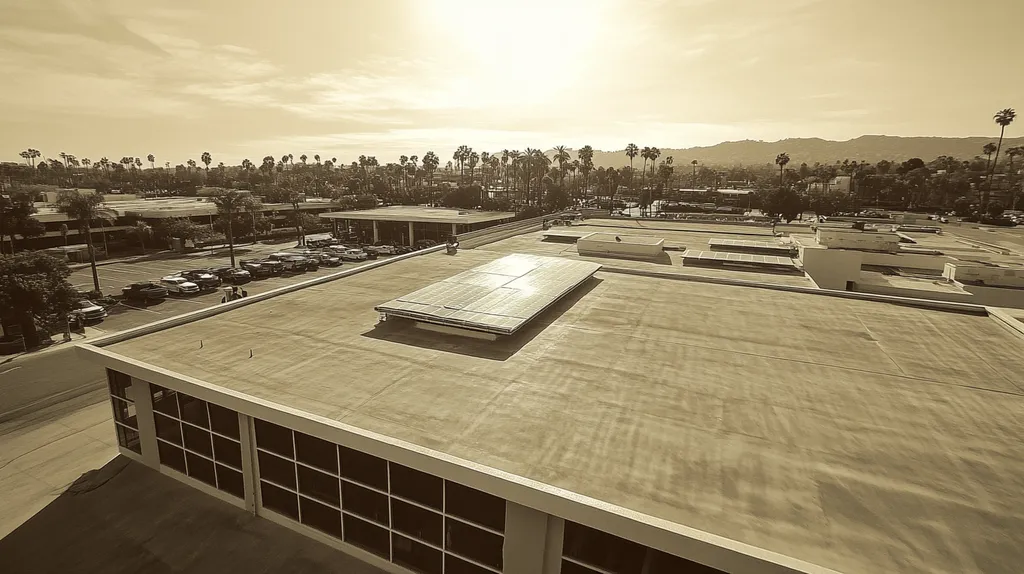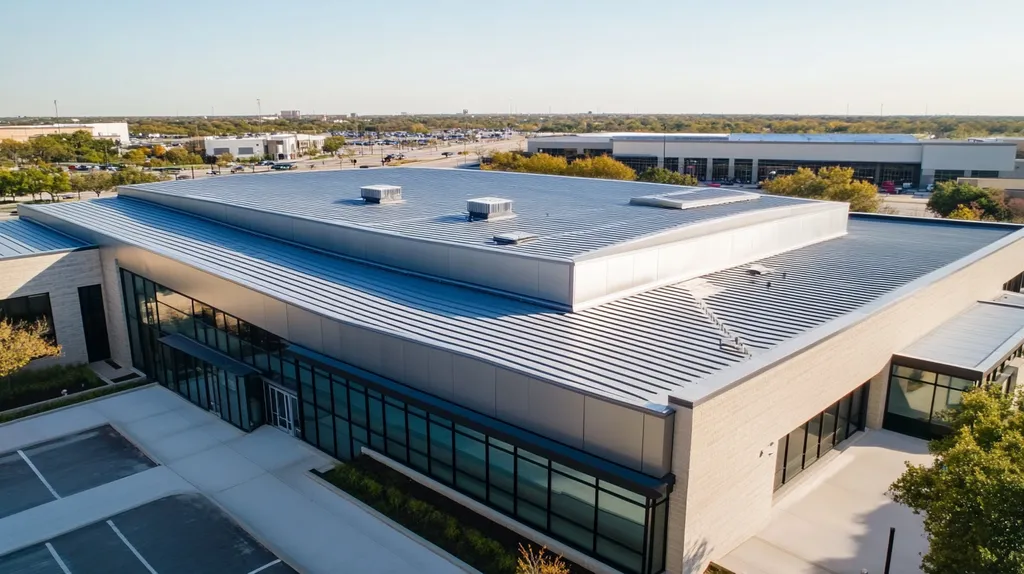Every year, over 11 million tons of commercial roofing materials end up in landfills, costing property owners millions in disposal fees while damaging the environment. With landfill costs rising 3-5% annually and stricter regulations emerging, traditional disposal methods are becoming increasingly unsustainable.
Modern recycling technologies can now recover up to 95% of roofing materials for reuse, creating both environmental benefits and significant cost savings. This comprehensive guide explores how facility managers can implement effective recycling programs, navigate technical requirements, and maximize the value of recovered materials.
SECTION 1: THE BASICS EXPLAINED
Every year, the commercial roofing industry generates over 11 million tons of waste material, most of which ends up in landfills at significant cost to building owners. This waste represents not just an environmental challenge, but also millions in lost opportunities for material recovery and cost savings. As landfill fees continue rising and sustainability regulations tighten, understanding roof material recycling has become essential for property owners and facility managers.
What It Is (In Plain Language)
Roof material recycling transforms what was once considered waste into valuable resources. Instead of sending old roofing to landfills, components are separated, processed, and repurposed into new products.
Metal components, such as fasteners and edging, can be melted down for new construction materials. Membrane materials like vinyl can be processed into raw materials for manufacturing new roofing products.
Vinyl roofing materials are particularly well-suited for recycling, with over 98% of raw materials convertible into new membranes through specialized processing facilities. (source: Sika Sarnafil)
Even insulation materials can often be recycled, either through reprocessing into new insulation or repurposing for other applications like sound dampening or erosion control.
Why It Matters (To Your Building)
The financial benefits of roof recycling start with immediate savings on disposal costs. Landfill fees have increased dramatically in recent years, making traditional disposal increasingly expensive.
Many recyclable roofing materials have monetary value. Metal components can be sold for scrap, while some manufacturers offer credits or incentives for returning old materials.
Buildings that implement recycling programs often qualify for environmental certifications like LEED points. These certifications can increase property value and attract environmentally conscious tenants.
Regulatory compliance is another key benefit. As more jurisdictions implement strict waste management requirements, having an established recycling program helps avoid potential penalties.
How It Works
The recycling process begins during project planning, when contractors identify which materials can be recycled. This assessment determines the specific handling and sorting requirements for each component.
During tear-off, materials are carefully separated into designated containers. This prevents contamination that could make recycling impossible and ensures maximum material recovery.
Sorted materials are then transported to specialized facilities for processing. Each material type follows its own recycling path – metals to smelters, membranes to reprocessing plants, and insulation to appropriate recycling centers.
Documentation tracks the entire process, providing verification for environmental compliance and certification programs. This paper trail helps demonstrate corporate responsibility and supports sustainability reporting.
SECTION 2: PRACTICAL APPLICATIONS
The commercial roofing industry faces a critical challenge as aging infrastructure reaches end-of-life status. With over 13 million tons of roofing waste generated annually, facility managers must embrace practical recycling solutions that protect both the environment and their budgets. Understanding the real-world applications of recycled roofing materials has become essential for property owners seeking sustainable, cost-effective alternatives to landfill disposal.
Common Uses & Examples
Recycled roofing materials serve diverse applications across multiple industries. Asphalt shingles, after processing through sorting and grinding, become valuable additives for road construction and base stabilization. (source: General Kinematics)
Metal roofing components, including fasteners, flashing, and panels, can be recycled into new construction materials through standard metal recycling streams. This process preserves valuable resources while generating revenue through scrap metal sales.
Single-ply membranes like TPO and PVC find new life as raw materials for manufacturing floor mats, walkway pads, and new roofing components. These applications demonstrate how versatile recycled materials can be when properly processed.
Even rigid insulation boards can be repurposed into composite materials for various construction applications, from sound barriers to erosion control products.
When You Need It Most
Roof replacement projects present prime opportunities for implementing recycling strategies. Planning should begin during the initial project assessment, allowing time to identify recyclable materials and coordinate with appropriate recycling facilities.
Emergency repairs following storm damage also benefit from recycling programs. Having established recycling protocols ensures damaged materials are properly sorted and processed rather than sent directly to landfills.
Major renovations that affect multiple building systems create ideal conditions for comprehensive recycling efforts. These projects often generate sufficient material volume to justify specialized recycling equipment and handling.
Regular maintenance activities can incorporate ongoing recycling practices, ensuring even small amounts of roofing waste are properly managed throughout the facility’s lifecycle.
Interactions With Other Systems
Roofing material recycling directly impacts building envelope performance. Using recycled components in new installations often provides superior thermal properties, contributing to overall energy efficiency.
Drainage systems benefit from recycled materials used in scuppers, gutters, and downspouts. These components maintain effectiveness while reducing environmental impact and raw material consumption.
Building automation systems can track and monitor recycling metrics, helping facility managers optimize their sustainability programs. This data integration supports environmental reporting and certification requirements.
Waste management systems become more efficient when roofing recycling protocols are properly integrated. Dedicated sorting areas and specialized containers streamline material handling while reducing contamination risks.
SECTION 3: KEY TERMINOLOGY DECODED
As the roofing industry evolves toward sustainability, property owners face an increasingly complex vocabulary of technical terms and measurements. Misunderstanding these terms can lead to costly mistakes – from ordering incorrect quantities to choosing incompatible materials. With roof replacement costs averaging $8-15 per square foot for commercial properties, clarity around terminology directly impacts both project success and bottom-line costs.
Essential Terms Explained
The foundation of roofing recycling starts with understanding material classifications. Post-consumer materials come from completed tear-offs, while post-industrial materials are manufacturing byproducts like trim waste and rejected products.
Asphalt shingle recycling transforms old roofing into valuable components for road construction and paving materials, creating both environmental and economic benefits. This process helps offset virgin material costs while reducing landfill waste. (source: Asphalt Roofing Manufacturers Association)
The waste diversion rate measures the percentage of roof materials kept out of landfills through recycling and reuse. Higher rates indicate more successful sustainability programs and often correlate with reduced disposal costs.
Material recovery refers to the extraction of valuable components from old roofing. This includes metals like copper and aluminum, which retain significant value, and synthetic materials that can be reprocessed into new products.
Industry Jargon Translated
Membrane roofing terminology often causes confusion. TPO (Thermoplastic Polyolefin) and EPDM (Ethylene Propylene Diene Monomer) represent the two most common single-ply options, each with distinct recycling characteristics.
R-value indicates insulation effectiveness, with higher numbers meaning better thermal resistance. This measurement becomes crucial when evaluating recycled insulation materials for reuse or replacement.
VOC (Volatile Organic Compounds) content matters for adhesives and coatings used in roofing. Lower VOC materials not only reduce environmental impact but often indicate better recyclability at end-of-life.
Tear resistance and dimensional stability describe a material’s durability characteristics. These properties help determine both initial performance and potential for future recycling.
Measurement & Units Simplified
A roofing square equals 100 square feet – the standard unit for measuring roof area. Large commercial projects often involve hundreds of squares, making accurate measurements essential for material ordering and recycling planning.
Load ratings, measured in pounds per square foot (psf), determine how much weight a roof can safely support. This becomes particularly important when considering recycled materials, which must meet the same structural requirements as virgin materials.
Mil thickness describes membrane materials, with one mil equaling 0.001 inches. This measurement helps evaluate material quality and potential recycling value.
Seam strength, measured in pounds per linear inch (pli), indicates how well roofing membranes hold together. Higher values typically suggest better durability and easier recovery during eventual recycling.
SECTION 4: DECISION FACTORS
The commercial roofing industry faces unprecedented pressure to adopt sustainable practices while maintaining cost efficiency. With landfill fees rising 3-5% annually and stricter environmental regulations emerging, facility managers must carefully weigh multiple factors when deciding how to handle roof disposal. Understanding these key decision elements helps property owners maximize both environmental benefits and financial returns while meeting increasingly stringent sustainability requirements.
Cost Considerations
Initial recycling costs typically run 10-15% higher than traditional disposal methods. However, this differential is often offset by reduced landfill fees, which can exceed $100 per ton in many urban areas.
Many jurisdictions offer tax incentives and rebates for commercial properties that implement comprehensive recycling programs. These incentives can significantly reduce the net cost of sustainable disposal methods.
The recycling process involves collecting used materials, breaking them down, and processing them into valuable construction materials – creating potential revenue streams through material recovery. (source: DTG Recycle)
Material segregation during tear-off requires additional labor but yields higher-quality recyclable materials that command better prices in the secondary market.
Performance Trade-offs
Modern recycled roofing materials often match or exceed the performance specifications of virgin materials. This includes critical metrics like tear strength, puncture resistance, and weathering characteristics.
Recycled metal components maintain their structural integrity through multiple recycling cycles, making them particularly valuable for sustainable construction practices.
Advanced processing techniques ensure recycled membrane materials retain their essential performance properties, including flexibility, UV resistance, and waterproofing capabilities.
Quality control standards for recycled materials have become increasingly rigorous, helping ensure consistent performance across applications.
Lifespan & Durability Factors
Properly processed recycled roofing materials typically achieve service lives comparable to new materials. This includes both structural components and weathering surfaces.
Environmental exposure testing shows recycled membranes maintain their protective properties throughout their expected service life when properly installed and maintained.
Regular maintenance requirements remain consistent between recycled and virgin materials, helping facility managers maintain predictable operating costs.
Warranty coverage for recycled materials has expanded significantly, with many manufacturers now offering terms matching those of conventional products.
SECTION 5: COMMON CHALLENGES
The commercial roofing industry faces mounting pressure to improve recycling practices, yet significant obstacles persist. Studies show that while recycling technology has advanced dramatically, implementation lags behind – with less than 10% of commercial roofing materials currently being recycled. These missed opportunities cost facility owners millions in disposal fees while contributing to environmental degradation. Understanding and addressing common challenges is crucial for successful material recovery programs.
Frequent Problems & Solutions
The recycling of vinyl roofs and other materials often falters due to improper removal techniques. Careful extraction and sorting are essential for maintaining material integrity and maximizing recovery value. (source: Sika USA)
Transportation logistics present another major hurdle. Materials must be properly consolidated and packaged to ensure cost-effective shipping to processing facilities. Establishing relationships with local recyclers helps optimize these logistics.
Cross-contamination between different roofing components often renders materials unrecyclable. Implementing clear separation protocols during tear-off prevents this issue while preserving material value.
Worker training gaps frequently compromise recycling efforts. Regular education sessions on proper handling techniques and material identification help ensure successful recovery.
Warning Signs To Watch For
Rising disposal costs indicate inefficient material management. When landfill fees consume an increasing portion of project budgets, it’s time to reassess recycling strategies.
Regulatory compliance issues often emerge when recycling programs fall short. Regular audits help identify potential violations before they trigger penalties.
Poor documentation of material disposal creates liability risks. Maintaining detailed records of all recycled materials protects against future claims while supporting sustainability reporting.
Inconsistent material separation during tear-off suggests procedural breakdowns. Regular quality control checks help maintain proper sorting standards.
Preventative Approaches
Successful recycling programs start with comprehensive planning. This includes identifying recyclable materials, establishing handling procedures, and selecting appropriate processing partners.
Regular staff training ensures consistent execution. Updates on new recycling technologies and procedures help teams maintain peak effectiveness.
Building strong relationships with recycling facilities improves program stability. Regular communication helps anticipate capacity issues and optimize material flow.
Monitoring industry developments reveals new recycling opportunities. Staying current with evolving technologies and markets maximizes material recovery value.
Documentation systems track program performance and identify improvement areas. Regular analysis of these metrics helps optimize recycling effectiveness while controlling costs.
SECTION 6: NEXT STEPS & RESOURCES
The commercial roofing industry generates over 11 million tons of recyclable waste annually, yet most facilities lack structured programs to capture this value. As disposal costs rise and environmental regulations tighten, property owners can no longer afford to ignore material recovery opportunities. Understanding how to evaluate providers, interpret standards, and access reliable resources has become essential for maximizing both environmental and financial returns.
Questions To Ask Providers
Start by requesting detailed documentation of their recycling processes and success rates. Quality providers should readily share data on material recovery percentages and final destinations of recycled components.
Verify their relationships with certified recycling facilities and material processors. Strong partnerships indicate established channels for proper material handling and maximum value recovery.
Ask about their sorting protocols during tear-off operations. Proper material separation at the source dramatically improves recycling success rates while reducing contamination risks.
Request cost comparisons between recycling and traditional disposal options. Transparent providers will outline both immediate expenses and potential long-term savings through material recovery.
Industry Standards & Guidelines
Asphalt shingle recycling has become increasingly standardized, with specific protocols for grinding and metal separation to produce recycled asphalt shingles (RAS) for road construction applications. These materials provide valuable additives for both hot-mix asphalt and cold patch road repairs. (source: General Kinematics)
LEED certification requirements provide clear benchmarks for construction waste management. Understanding these standards helps align recycling programs with recognized sustainability metrics.
State and local regulations increasingly mandate minimum recycling rates for commercial construction projects. Staying current with these requirements prevents compliance issues and potential penalties.
Industry associations like NRCA offer detailed guidelines for material handling and recycling procedures. These resources establish baseline expectations for program implementation.
Further Learning Simplified
Professional development resources through organizations like IIBEC and NRCA provide structured learning paths. These programs help facility managers understand both technical requirements and practical implementation strategies.
Trade publications offer regular updates on emerging recycling technologies and best practices. Subscribing to these resources keeps teams informed of industry innovations.
Local waste management authorities often provide free consulting services for developing recycling programs. These resources help optimize material handling procedures for specific regional requirements.
Industry conferences and trade shows showcase the latest recycling equipment and techniques. These events provide valuable networking opportunities with experienced recycling professionals.
The Bottom Line
With landfill costs rising 3-5% annually and over 11 million tons of roofing waste generated each year, the commercial roofing industry stands at a critical crossroads.
Modern recycling technologies now make it possible to recover up to 95% of roofing materials, creating both environmental benefits and significant cost savings for property owners.
The financial implications are clear: facilities that implement comprehensive recycling programs can reduce disposal costs by 30-40% while potentially generating revenue through material recovery.
As regulations tighten and sustainability becomes increasingly crucial for property values, roofing material recycling has evolved from an optional consideration to an essential business practice.
The time for action is now – tomorrow’s success depends on today’s commitment to sustainable roofing practices.
FREQUENTLY ASKED QUESTIONS
Q. What are commercial roof material recycling basics?
A. Roof material recycling involves transforming waste into valuable resources instead of sending it to landfills. Components like metals and membranes are processed to create new products, offering both environmental benefits and cost savings for property owners.
Q. How can recycling roof materials benefit commercial roof projects?
A. Recycling can save costs on disposal fees and recover materials that can be reused. It allows property owners to not only save money but also qualify for environmental certifications that enhance property value.
Q. What key terms should I know about industrial roof recycling?
A. Understanding terms like waste diversion rate and material recovery helps facilitate better decision-making. These concepts relate to how effectively materials are recycled and the extent to which valuable components are saved from landfills.
Q. What decision factors should I consider for recycling industrial roofs?
A. Evaluate costs, performance trade-offs, and potential tax incentives for recycling. Understanding the long-term benefits of recycling versus traditional disposal can help you make financially sound and environmentally friendly choices.
Q. What challenges arise with commercial roof material recycling?
A. Common challenges include improper removal techniques and transportation logistics that can hinder recycling. Staff training and adhering to sorting protocols are essential for overcoming these obstacles and maximizing recovery value.
Q. What steps should I take next for roof material recycling?
A. Initiate conversations with recycling providers, inquire about their processes, and verify certification. Understanding industry standards and accessing reliable resources will help you implement a successful recycling program.
Q. How can I verify the effectiveness of my recycling program?
A. Track metrics like waste diversion rates and material recovery percentages. Regular audits of your recycling processes can help identify areas for improvement and ensure compliance with sustainability goals.

